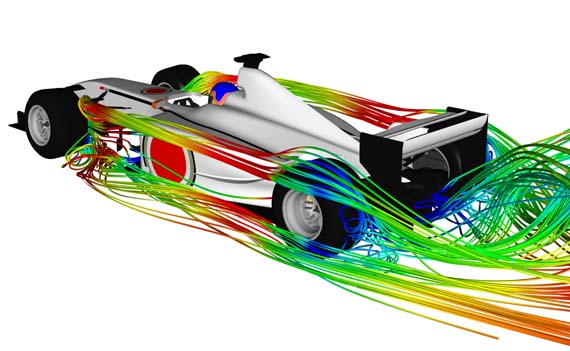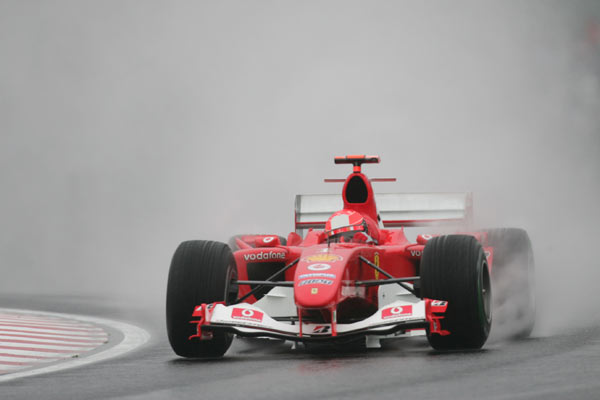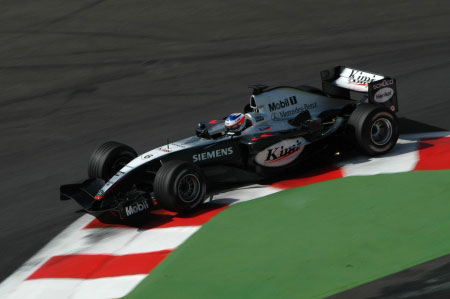Car Development and Racing Physics
The aerodynamics of the race car is multi-functional. The first purpose is to make it as streamline as possible. The second purpose is to provide downforce for the race vehicle. The last reason is to control the airflow over the car’s body.

Photo courtesy: Comusys
This is a computer generatered image of the airflow over the cars' body.
Streamlining a vehicle means reducing the drag of the vehicle traveling through the air. This is done two ways: one is making the surfaces in contact with the air as smooth as possible. The second way is decreasing the size of the car. This is due to the fact that DRAG = ½DρAυ²; where D is a drag coefficient (which is dependent on the smoothness of the material), ρ is the density of air, υ is the velocity traveling through the air, and A is the cross-sectional area of the vehicle. By reducing the cross-sectional area of the vehicle, vehicles can have less drag and in turn drive faster. As mentioned before, the drag coefficient is related to how smooth the material is that the air is traveling over.
DRAG = ½DρAυ²
Photo courtesy: Ferrari / Shell racing
Downforce is the opposite of lift. This is the result of Bernoulli’s effect. Bernoulli’s effect explains how fluids, in this case the air, will react when traveling over the wing surface. Lift occurs due to a difference in pressures on opposite sides of airfoils caused by this effect. The wings on race cars are essentially wings flipped upside-down so that the lifting force is directed in a downward direction. This is downforce.
The theory behind creating downforce is to increase the force the vehicle has on the ground. This in turn will increase the traction of the tires, enabling the race cars to make sharp corners at higher speeds. Most race cars create so much downforce that at speeds greater than 100 mph they have enough downforce that they could drive on a road that was up-side down.
Photo courtesy: Mclaren / Mercedes Benz racing
By controlling the airflow over the car’s body, designers can direct more air to those components that need it most. For example, most cars have vents located on the inside of tires to direct air over the brake discs and brake calibers. This helps keeping the brakes cool therefore making them more effective. Designers also try to direct more air to the cooling and powering of the engines. By increasing the airflow to these components, mainly the engine’s radiators, turbo chargers, and intakes, they can make the car more powerful and faster.

